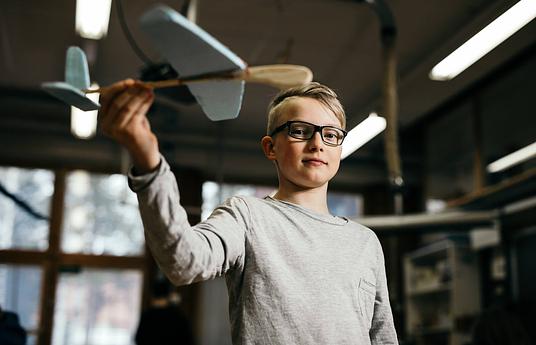For those in the know, the Finnish system is often seen as the pinnacle of how to do education. With shorter days, less homework, and better results it’s hard to see how they manage to do it. So let’s look at how it all works, and maybe we can learn a thing or two from the Finns.
It all starts with teachers.
In Finland, teacher training is a five year university degree which focuses on didactics and pedagogies – in other words, the art and science of teaching. Students of teacher training focus their study on how learning works and how to teach specific subjects.
Having extensive training means that teachers experience less supervision once they are in schools. They are granted a higher level of trust and freedom than in other educational systems which in turn empowers teachers. This allows them a level of creativity and ownership over their work that is uncommon in the teaching profession.
In Finland teachers are not supervised through standardized tests, and there isn’t a system in which their work is evaluated. The relationship between teachers and governing officials, parents, and students is based on trust. Teachers are viewed as being experts and are allowed pedagogical freedom in their classrooms. Once a year there is compulsory in-service training, to encourage professional development, meaning that teaching styles do not remain stagnant but continually evolve and develop.
The relationship between teachers and students is also a lot more relaxed, and can be a point of controversy for those in stricter systems in other countries. Teachers are referred to informally by their first names, and physical touch isn’t banned. In Finland, if a child is upset and needs comfort, teachers are allowed to pick the child up and cuddle them. This is strikingly different to other countries where physical touch is banned for safeguarding reasons. This controversial difference highlights the level of trust that Finland places in its teachers.
Equal opportunities for all.
To make education an equal opportunity for all, school lunch, materials and commuting are all free. This opens the doors to all levels of society, making school and education as accessible as possible. Similarly, the Finnish national curriculum is encompassed in all schools equally; meaning that education in Finland provides the kinds of equal opportunities that are rarely found elsewhere.
Higher education is also free. There are no deadlines, meaning that people can go back to study at any age, and are free to attend and re-attend throughout their lives. When contrasting this with other countries, such as the United States or the United Kingdom where students leave with hefty debts, it is clear to see how this levels out society. It allows people of all backgrounds to enjoy the same opportunities and to pursue the careers of their choice.
The emphasis of the Finnish national core curriculum is on how we learn, rather than what we learn.
The Finnish national core curriculum has seen an update recently to incorporate contemporary approaches and interests in education. The curriculum was designed to improve operational culture, leadership and community within schools, and will redefine core values whilst emphasising each student's right to individual, holistic education and wellbeing. There is a focus on students playing an active role in their learning, and using interaction to instigate learning.
The broad-band competencies as outlined by the Finnish core curriculum are as follows:
-
Thinking and learning.
-
Cultural competence, interaction and expression.
-
Looking after oneself, managing daily activities, and safety.
-
Multiliteracy.
-
Information and communications technology competence.
-
Competence required for working life and entrepreneurship.
-
Participation, empowerment and responsibility.
The curriculum contains a general overview of content for each subject but the main aim is to meet the goals of the competencies above, and students will be assessed to see if they meet these goals in different subject areas. Compared to more traditional, industrial versions of education, Finland’s national core curriculum shows a focus on lifelong, interdisciplinary skills. These can be adapted within each subject area, rather than isolating subjects and removing their relevancy to real life. It is also recommended that students receive at least one project based learning experience a year.
Assessment is also addressed in their curriculum. Assessment methods must be versatile and support the learner’s development. There is a particular focus on self-assessment, something that has long been employed in Finnish education, but now has a much heavier emphasis.
Collaboration for teachers is now bound into the national curriculum.
Teachers will be designing their lesson plans together and co-teach lessons together regularly, and they are responsible for creating a sense of community amongst the students. Teachers will continue to have their pedagogical freedom. The curriculum has been designed to provide teachers with a supportive framework, in which they can select the best way to achieve the goals of the core-curriculum for each individual student.
Teacher training is also being updated. Student teachers will learn how to code and how to include computational thinking in mathematics at all levels of education. They will also learn how to teach the social sciences – particularly social justice – so that it can be included in primary education, rather than being started later during secondary years as it is currently.
So what is it that makes Finnish education so great?
When speaking with the BBC, HundrED’s own CEO, Saku Tuominen, summed it up in one word: ‘trust’. We’ve seen a huge rise in teacher mental health issues and high levels of teachers leaving the field. One of the main reasons people look to Finland for inspiration is because of their high level of teaching. Realistically it is so advanced because of the expert training teachers receive, and because they are allowed to do their job without much interference.
When we spoke to Maarit Rossi, a Finnish teacher who was chosen as one of the top ten best teachers in the world, she had this to say about what personally drives her as a teacher:
‘My personal motivator is the pedagogical freedom us teachers have in Finland - we are trusted. I have been able to produce my own learning material and trial it. There has never been any doubt if I’m following the national core curriculum or not. Parents have had great faith in my work. These are the things that have really motivated me in my profession.’
When you compare the teaching profession with other professions, it is hard to see another position which is under such an intense microscope. Trust allows teachers the freedom to relax and concentrate on the children in front of them, creatively coming up with ways to cater to each child.
At HundrED we believe that it is those on the ground who will make the change in education. So we can all learn a thing or two from Finland’s approach. Let’s trust our teachers and empower them so they can do their jobs properly and prepare the next generation for their adult lives.
---
What do Finnish children think the future of education should look like? Watch our video below:
If you want to know more about the Finnish education system these are some good reads:
Why do Finnish pupils succeed with less homework?
Highly trained, respected and free: Why Finland’s teachers are different.
No grammar schools, lots of play: The secrets of Europe’s top education system.
Finnish National Board of Education : Teacher Training
Finland’s educational success is no miracle
Or check out our innovations, these in particular might be of interest:
Co-teaching in the age of digitization



